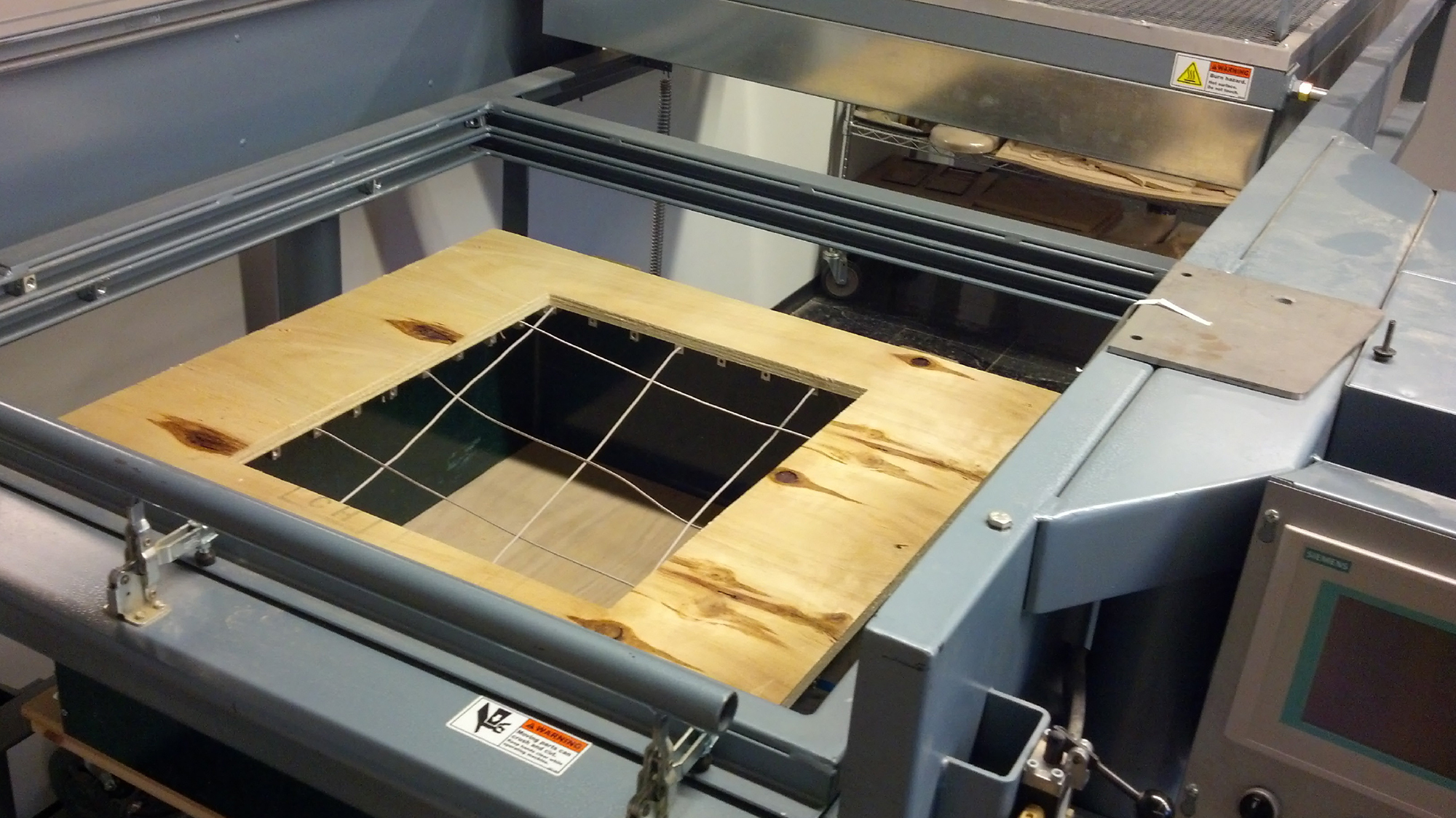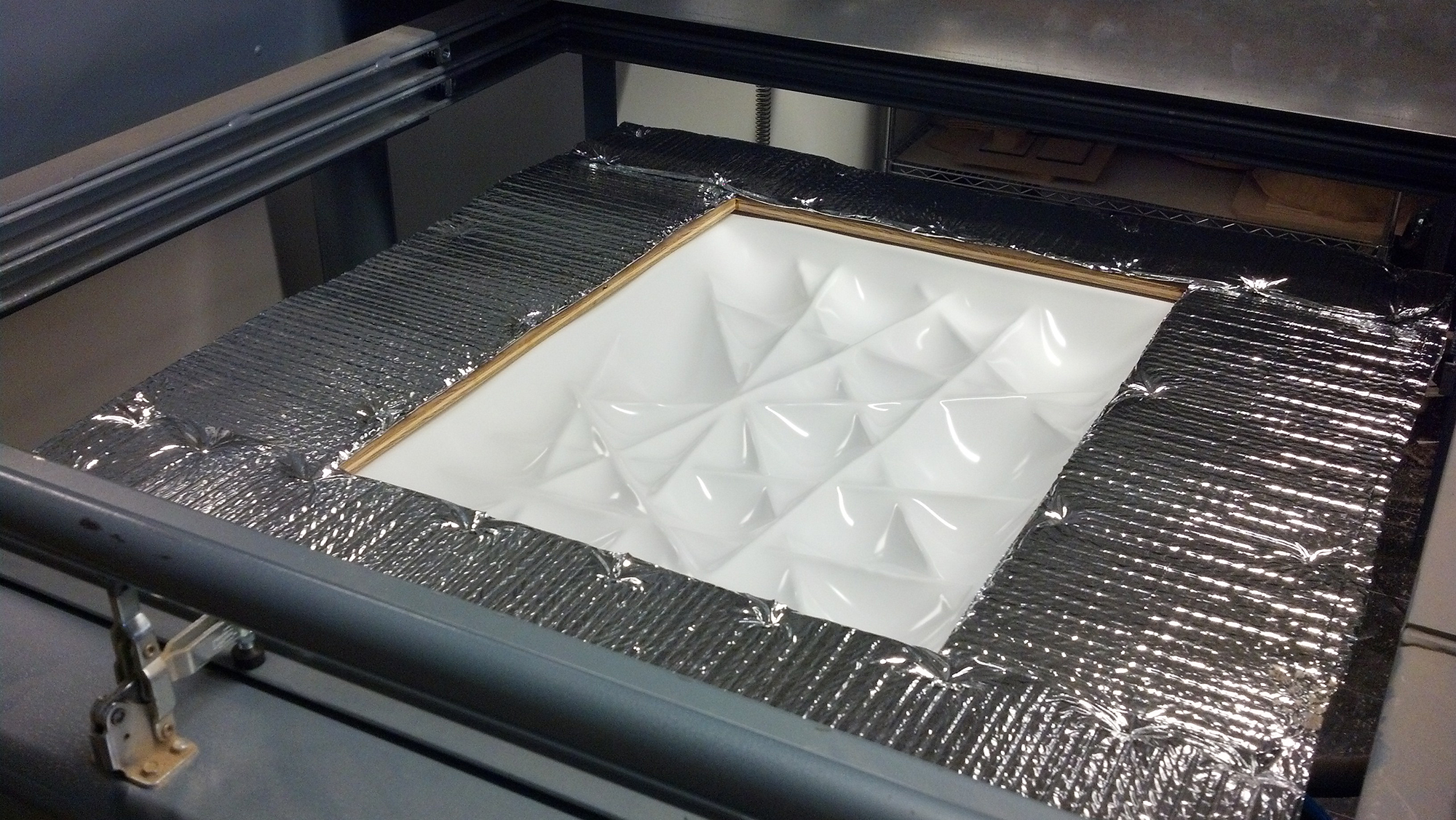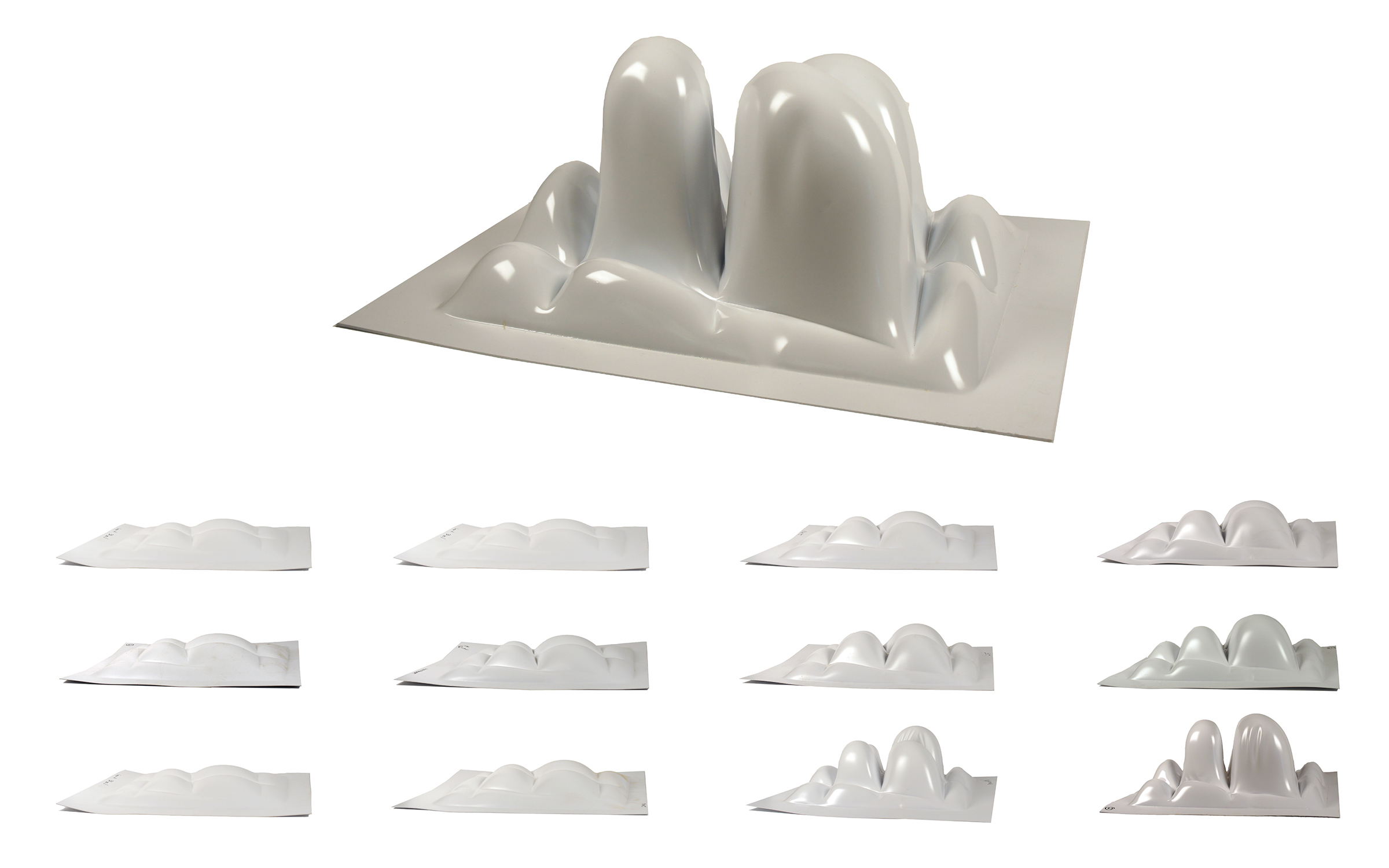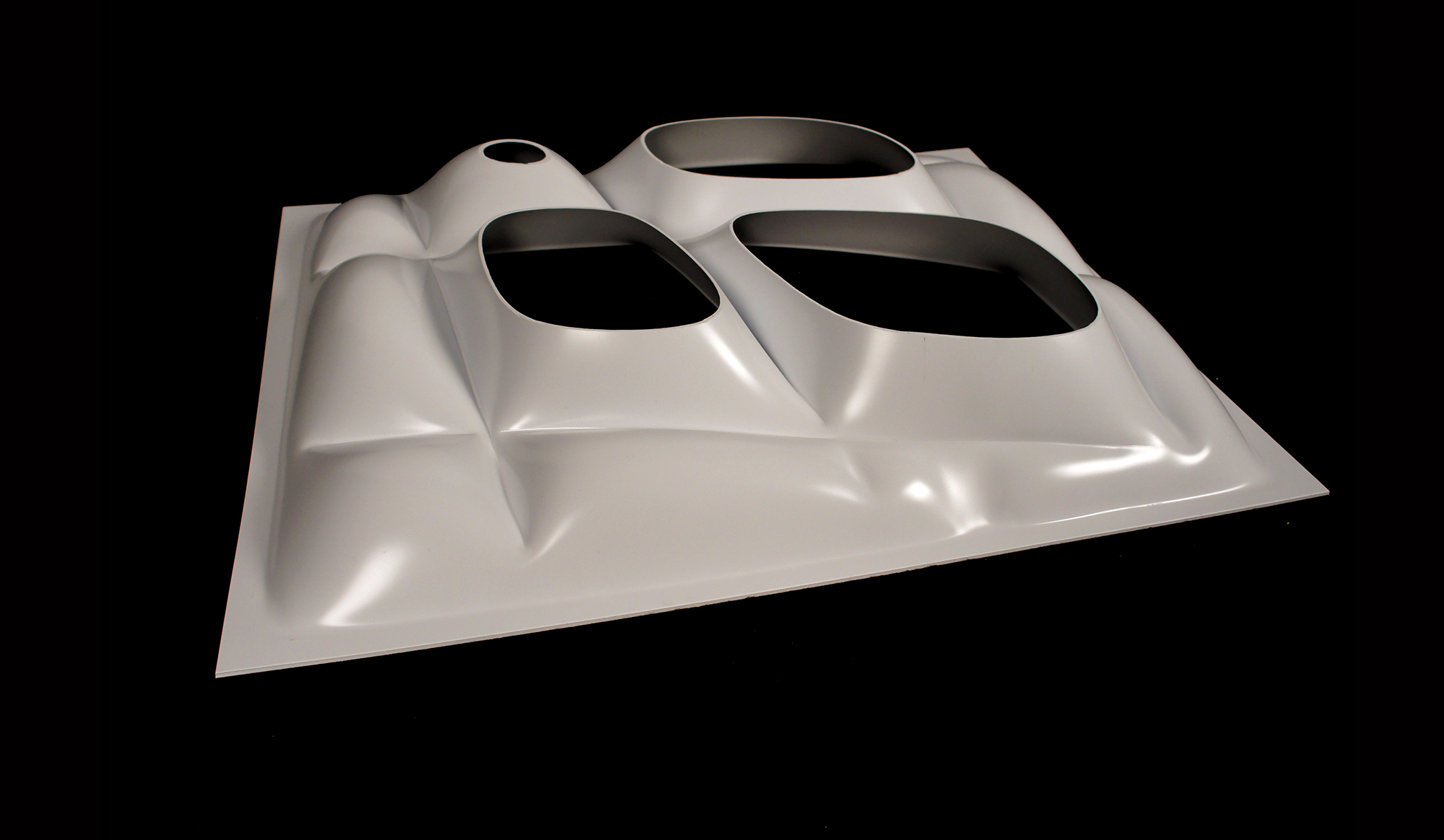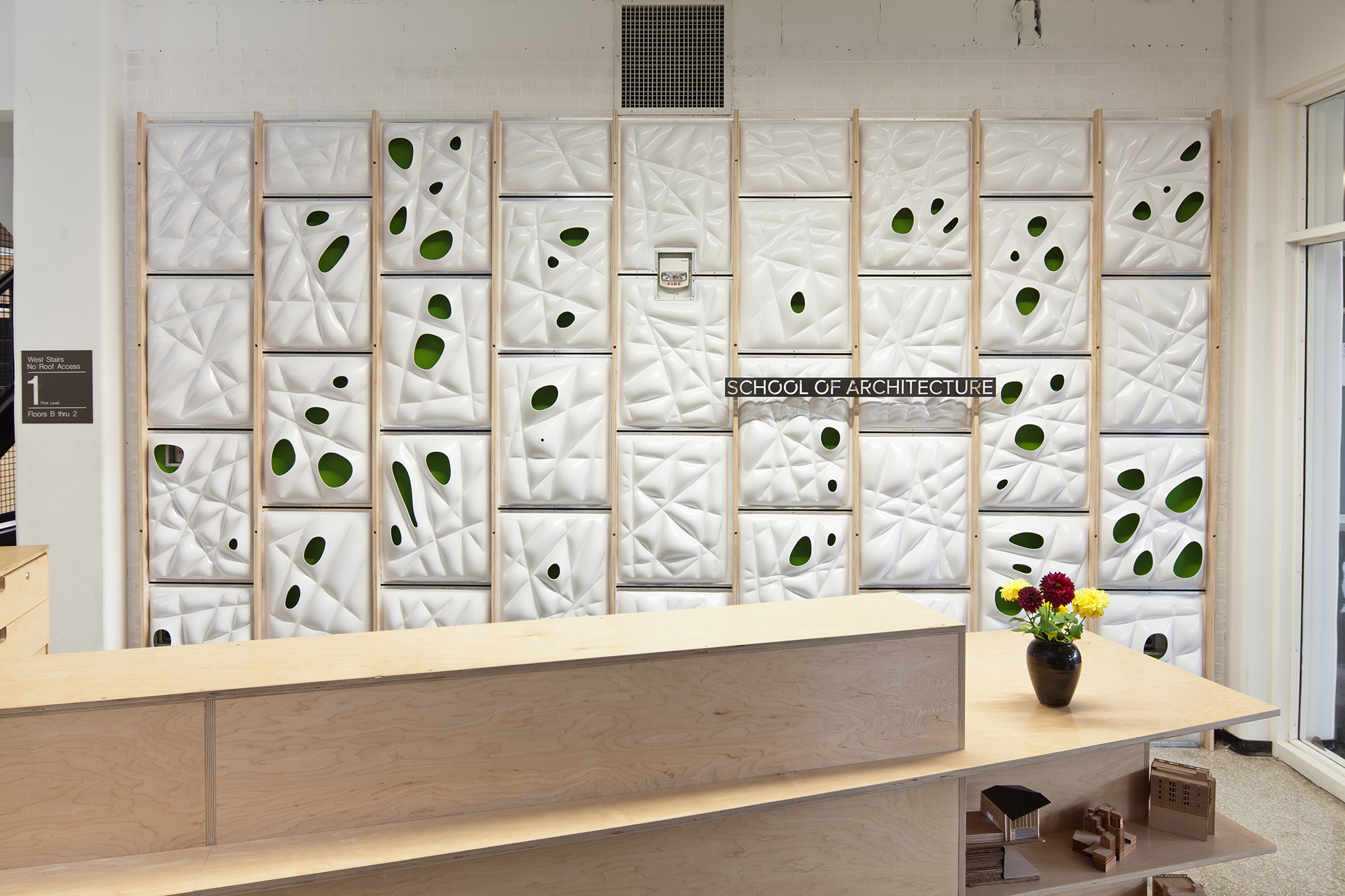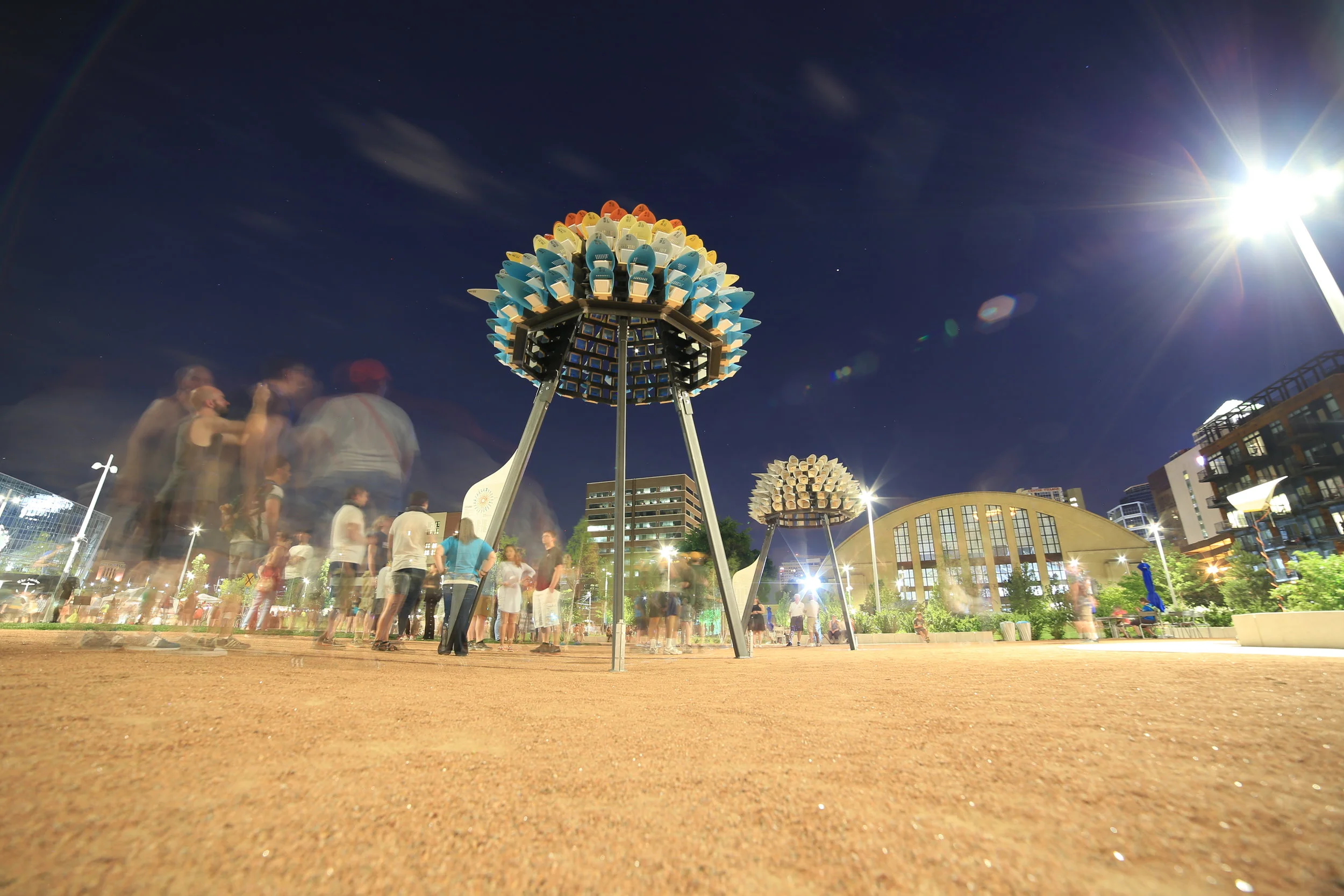VarVac
Cerny and Associates Architects designed the main office at the University of Minnesota School of Architecture in the mid-century modernist style. The room, a hard acoustically live space made of brick, glass, and cast-in-place concrete, was noisy and posed difficulties for individuals working within it. Recognizing this problem, the school asked us to help renovate. Variable Vacuum Forming Wall (VarVac) is a new skin built to cover the brick wall behind the main reception desk. Our goal was to create an acoustically heterogeneous wall that would mediate sound and create an environment more conducive to the work of the staff.
The budget was limited, so we turned to inexpensive materials like wood, plastic, and felt. Our solution was to create a vacuum-formed topographical surface that would disperse or absorb sound in specific locations. This required formal specificity (typically expensive to achieve using traditional vacuum forming strategies). To reduce cost, we developed a strategy that deployed a simple variable mold mad of plywood and wire. Sound mapping and the software Grasshopper were used to generate patterns that were translated to the mold and used to generate a variable surface. The new wall diffuses sound along its length, mediating the problem of focused directional noise. Cuts in the outer skin reveal a sub-dermal layer of absorptive felt. Exposing the felt creates pockets of “quiet” located in specific locations (like the area behind the reception desk). This more completely eliminates ambient noise and creates spaces more conducive to intimate conversations.
HouMinn Practice w/Philip Bussey
Client
University of Minnesota
Photography of built project: Ryan Lodermeier


